Friction Performance of Aged T-BFRP Composite for Bearing Applications
Abstract
:1. Introduction
2. Methodology
2.1. Preparation of the Fibres
2.2. Preparation of the Test Specimens
2.3. Experimental Procedure
2.4. Examination of the Worn Surfaces: Photo Micrographs Analysis
3. Results and Discussion
3.1. Friction Performance of T-BFRP Composite Aged in Various Solutions
3.2. Temperature Performance of T-BFRP Composite Aged in Various Solutions
3.3. Morphology Analysis of the Worn Samples
3.4. Comparison with Previous Works on Friction Performance of Polymeric Composites
4. Conclusions
- For friction performance of the aged T-BFRP composite, both AP-O and P-O showed increasing trends of friction coefficients for the different applied loads (5–30 N) when the kinematic viscosity of the aging solutions increased. This is attributed to the high shear resistance at the rubbing zone between the composite/counterface due to the thickening of the aging solutions at high kinematic viscosity.
- The friction performance for AP-O and P-O for the aged T-BFRP composite followed the order of R134a > SAE80 > ATF4 > ATF3 > 20W/50 > 15W/50 > 15W/40 > 10W/50 > 10W/40 > 10W/30 > 5W/50 > 5W/40 respectively where T-BFRP composite aged R143a and 5W/40 recorded the highest and lowest values in friction coefficient for AP and P orientations.
- For the aged NP, there was no sign of obvious fluctuations in friction coefficient profiles for the different aging solutions. Instead, for the same applied load under different aging conditions, aged NP produced the same friction coefficient profiles curves with respect to 6.72 km of sliding distance at 2.8 m/s of counterface sliding velocity.
- The improvement in friction coefficient for the aged T-BFRP composite in AP5W/40 and P5W/40 was 32% and 49% as compared to the aged NP for 30 N of applied load. For the same orientation but under different aging condition, i.e., APR134a and PR134a, the improvement in friction coefficient were reduced to 7.5% and 9.9% respectively.
- On average, the improvement in interface temperature was 45 ± 0.3% for the aged T-BFRP composited in AP and P orientations at 30 N of applied load and 3.32 km of sliding distance as compared to the aged NP.
- The current work also revealed that at high kinematic viscosity, i.e., high shear resistance of the sliding surfaces, the relative shear resistance incurred by the test samples was much higher than at low kinematic viscosity, i.e., low shear resistance of the sliding surfaces. This increased the interface temperature since the friction component of relative motion of the composite/counterface was high.
- The wear mechanism for the aged T-BFRP composite at AP-O was predominated by micro-cracks, plastic deformation and debonding of fibres. There was evidence of hollow regions at the resinous regions associated with loose fibre at the worn surfaces.
- For the aged T-BFRP composite at P-O, the wear mechanism was initiated by adhered fibres parallel to the sliding direction that soon caused fibre debonding resulting in scattered loose fibres and wear debris at the worn surfaces of the composite. Slight fracture at the resinous region was also evidenced due to the absences on the fibre in the polyester matrix.
- Meanwhile for the aged NP, a large number of micro-cracks which propagated to form macro-cracks and finally fractured the polyester were seen through microscopic analysis. Due to the absence of the fibre and under high loading conditions, large chunks of loose wear debris were seen on the worn surfaces. Moreover, the rate of plastic deformation on the worn samples was severe as compared to AP-O and P-O at 30 N of applied load.
- On a general note, microscopic images of the worn samples for 30 N of applied load for the aged AP and P orientations revealed that the wear was severe with high absorption rate and less severe for samples with low absorption rate. Hence, it can be said that surface wettability of the aged betelnut fibres worsened when they were aged in solution with low kinematic viscosity.
Funding
Acknowledgments
Conflicts of Interest
References
- Nirmal, U.; Hashim, J.; Ahmad, M.M.H.M. A review on tribological performance of natural fibre polymeric composites. Tribol. Int. 2015, 83, 77–104. [Google Scholar] [CrossRef]
- Chegdani, F.; El Mansori, M. Friction scale effect in drilling natural fiber composites. Tribol. Int. 2018, 119, 622–630. [Google Scholar] [CrossRef]
- Nirmal, U.; Low, K.O.; Hashim, J. On the effect of abrasiveness to process equipment using betelnut and glass fibres reinforced polyester composites. Wear 2012, 290–291, 32–40. [Google Scholar] [CrossRef]
- Nirmal, U.; Hashim, J.; Lau, S.T.W.; Yuhazri, M.Y.; Yousif, B.F. Betelnut fibres as an alternative to glass fibres to reinforce thermoset composites: A comparative study. Text. Res. J. 2012, 82, 1107–1120. [Google Scholar] [CrossRef] [Green Version]
- Nirmal, U.; Yousif, B.F.; Rilling, D.; Brevern, P.V. Effect of betelnut fibres treatment and contact conditions on adhesive wear and frictional performance of polyester composites. Wear 2010, 268, 1354–1370. [Google Scholar] [CrossRef] [Green Version]
- Nirmal, U.; Hashim, J.; Ahmad, M.M.; Yuhazri, M. Surface Roughness Analysis of Stainless Steel Counterface (AISI-304) Subjected to Treated Betelnut Fiber–Reinforced Polyester (T-BFRP) Composites Aged in Different Solutions with Different Kinematic Viscosity. Mater. Perform. Charact. 2018, 7. [Google Scholar] [CrossRef]
- Nirmal, U.; Singh, N.; Hashim, J.; Lau, S.T.W.; Jamil, N. On the effect of different polymer matrix and fibre treatment on single fibre pullout test using betelnut fibres. Mater. Des. 2011, 32, 2717–2726. [Google Scholar] [CrossRef]
- Nirmal, U.; Hashim, J.; Low, K.O.; Lau, S.T.W.; Jamil, N.; Yuhazri, M.Y. Abrasiveness to process equipment using natural & synthetic fibres reinforced polyester composites. In Advances in Semiconductor Packaging & Test Technology; Multimedia University: Cyberjaya, Malaysia, 2012; Volume 3, pp. 1–8. [Google Scholar]
- Cadillac Cts Sport Wagon: Chassis. 2010. Available online: http://zelmore.com/auto/files/2010/10/2010-Cadillac-Cts-Sport-Wagon-View-chassis-and-engine1.jpg (accessed on 4 February 2017).
- Lansdown, A.R. Tribology in Practice Series: Lubrication and Lubricant Selection-A Practical Guide, 3rd ed.; Professional Engineering Publishing: London, UK, 2004. [Google Scholar]
- ATF DEXRON III. Available online: http://pocl.gov.bd/wp-content/uploads/2015/07/TOTAL_ATF.pdf (accessed on 25 August 2014).
- Mobil. Mobil ATF+4; Exxon Mobil Corporation: Spring, TX, USA, 2014; Available online: http://www.mobil.com/USA-English/Lubes/PDS/GLXXENPVLMOMobil_ATF_4.aspx (accessed on 25 August 2014).
- UCON™ Refrigeration Compressor Lubricants-Fluid Technologies. Available online: http://msdssearch.dow.com/PublishedLiteratureDOWCOM/dh_08e2/0901b803808e2c65.pdf?filepath=automotive/pdfs/noreg/299-51124.pdf&fromPage=GetDoc (accessed on 25 August 2014).
- Yousif, B.F.; Nirmal, U. Wear and frictional performance of polymeric composites aged in various solutions. Wear 2011, 272, 97–104. [Google Scholar] [CrossRef]
- ASTM G99-05: Standard Test Method for Wear Testing with a Pin-on-Disk Apparatus; ASTM International: West Conshohocken, PA, USA, 2010.
- Nirmal, U.; Ahmad, M.M.H.M.; Yuhazri, M.Y.; Kamarul, A.M. Degradation behaviour of treated betelnut fibres reinforced polyester composites for tribological applications. World Rev. Sci. Technol. Sustain. Dev. 2018, 14, 180–227. [Google Scholar] [CrossRef]
- Nirmal, U. Betelnut Fibres as Bio-Reinforcements in Polyester Composites for Mechanical and Tribological Applications; Multimedia University: Cyberjaya, Malaysia, 2011. [Google Scholar]
- Zsidai, L.; de Baets, P.; Samyn, P.; Kalacska, G.; van Peteghem, A.P.; van Parys, F. The tribological behaviour of engineering plastics during sliding friction investigated with sParys, F. Vanmall-scale specimens. Int. J. Wear 2002, 253, 673–688. [Google Scholar] [CrossRef]
- Navin, C.; Dwivedi, U.K.; Acharya, S.K. Anisotropic abrasive wear behaviour of bamboo (Dentrocalamus strictus). Wear 2007, 262, 1031–1037. [Google Scholar]
- Massey, B.S.; Ward-Smith, A.J. Mechanics of Fluids, 9th ed.; Spon Press: London, UK; New York, NY, USA, 2012. [Google Scholar]
- Nirmal, U.; Hashim, J.; Low, K.O. Adhesive wear and frictional performance of bamboo fibres reinforced epoxy composite. Tribol. Int. 2012, 47, 122–133. [Google Scholar] [CrossRef]
- Yousif, B.F.; El-Tayeb, N.S.; Yusaf, T.F. The Effects of Load and Velocity on Friction and Interface Temperature of CGRP Sliding Against Smooth Stainless Steel. In Proceedings of the ASME 8th Biennial Conference on Engineering Systems Design and Analysis, Torino, Italy, 4–7 July 2006; pp. 867–874. [Google Scholar]
- Chin, C.W.; Yousif, B.F. Potential of kenaf fibres as reinforcement for tribological applications. Wear 2009, 267, 1550–1557. [Google Scholar] [CrossRef]
- Yousif, B.F.; Chin, C.W. Epoxy composite based on kenaf fibers for tribological applications under wet contact conditions. Surf. Rev. Lett. 2012, 19, 1250050. [Google Scholar] [CrossRef]
- Singh, N.; Rilling, D.; Yousif, B.F. Kenaf Fibers for Tribo-Thermoplastic Composites. In Volume 4: Design and Manufacturing; ASME: New York, NY, USA, 2009; pp. 307–311. [Google Scholar] [Green Version]
- Singh, N.; Yousif, B.F.; Rilling, D. Tribological Characteristics of Sustainable Fiber-Reinforced Thermoplastic Composites under Wet Adhesive Wear. Tribol. Trans. 2011, 54, 736–748. [Google Scholar] [CrossRef] [Green Version]
- Nirmal, U.; Yousif, B.F.; Rilling, D.; Brevern, P.V.; Jamil, N. The potential of using treated betelnut fibres as reinforcement for tribo-bio polymeric composites subjected to dry/wet contact conditions. In Proceedings of the International Conference on Natural Polymers (ICNP), Kottayam, Kerala, India, 24–26 September 2010. [Google Scholar]
- Nirmal, U.; Hashim, J.; Rilling, D.; Brevern, P.V.; Yousif, B.F. Tribo performance of T-BFRP composite subjected to dry/wet contact conditions. In Natural Polymers, Biopolymers, Biomaterials, and Their Composites, Blends, and IPNs; Apple Academic Press: Waretown, NJ, USA, 2012; pp. 311–325. [Google Scholar]
- Singh Gill, N.; Yousif, B.F. Wear and frictional performance of betelnut fibre-reinforced polyester composite. Proc. Inst. Mech. Eng. Part J. 2009, 223, 183–194. [Google Scholar] [CrossRef]
- Yousif, B.F.; El-Tayeb, N.S.M. Tribological evaluations of polyester composites considering three orientations of CSM glass fibers using BOR machine. Appl. Compos. Mater. 2007, 14, 105–116. [Google Scholar] [CrossRef]
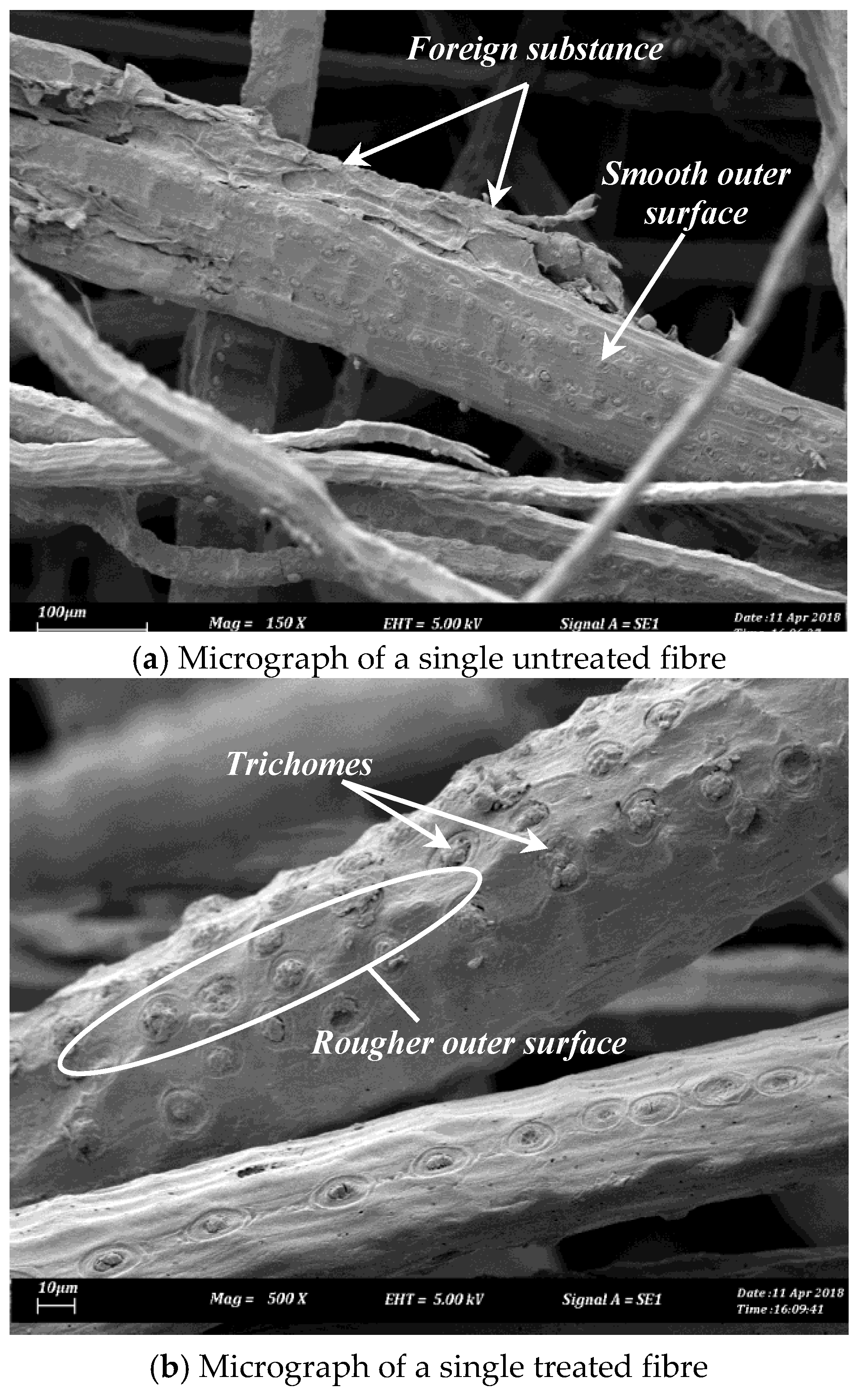
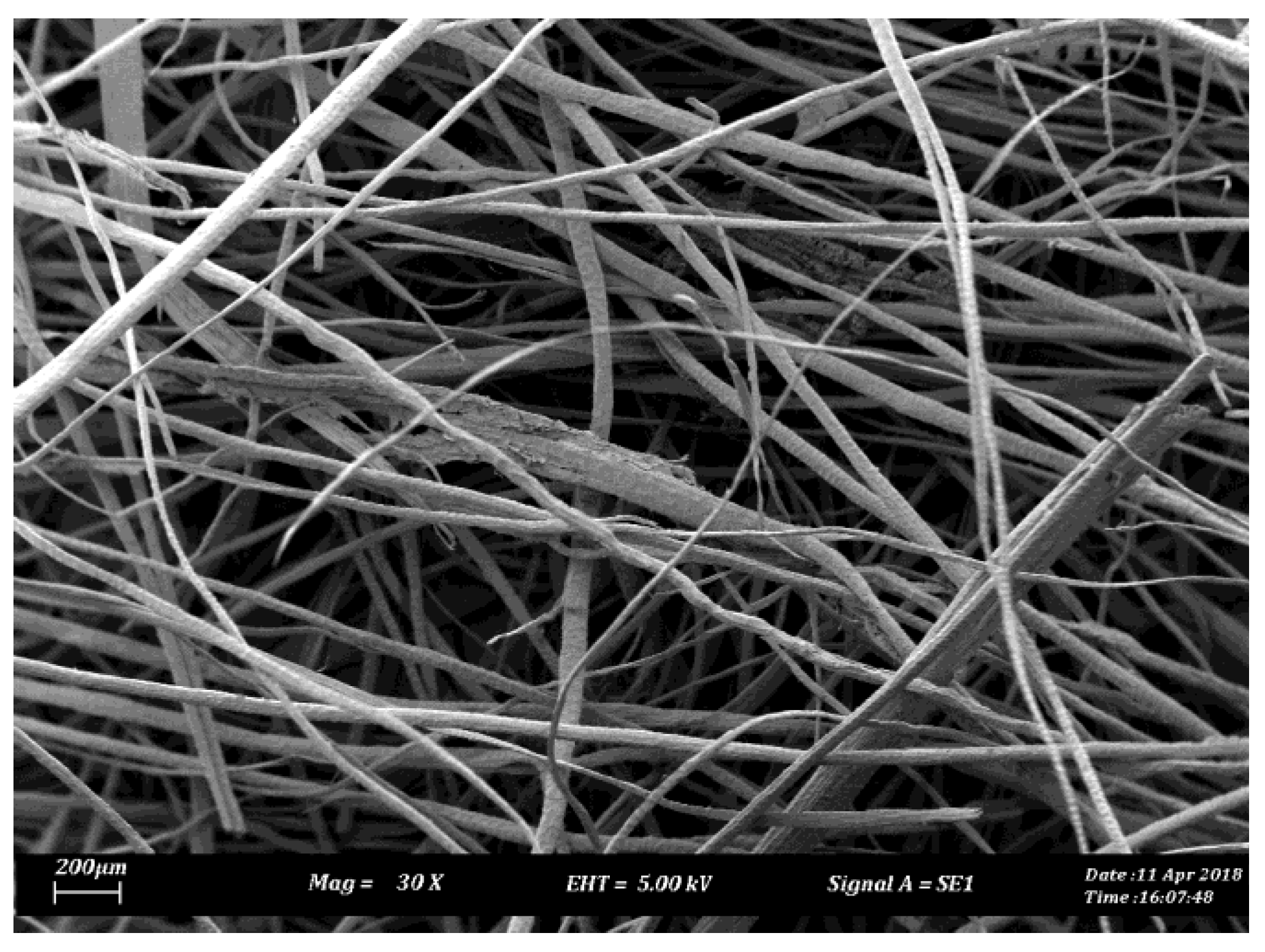
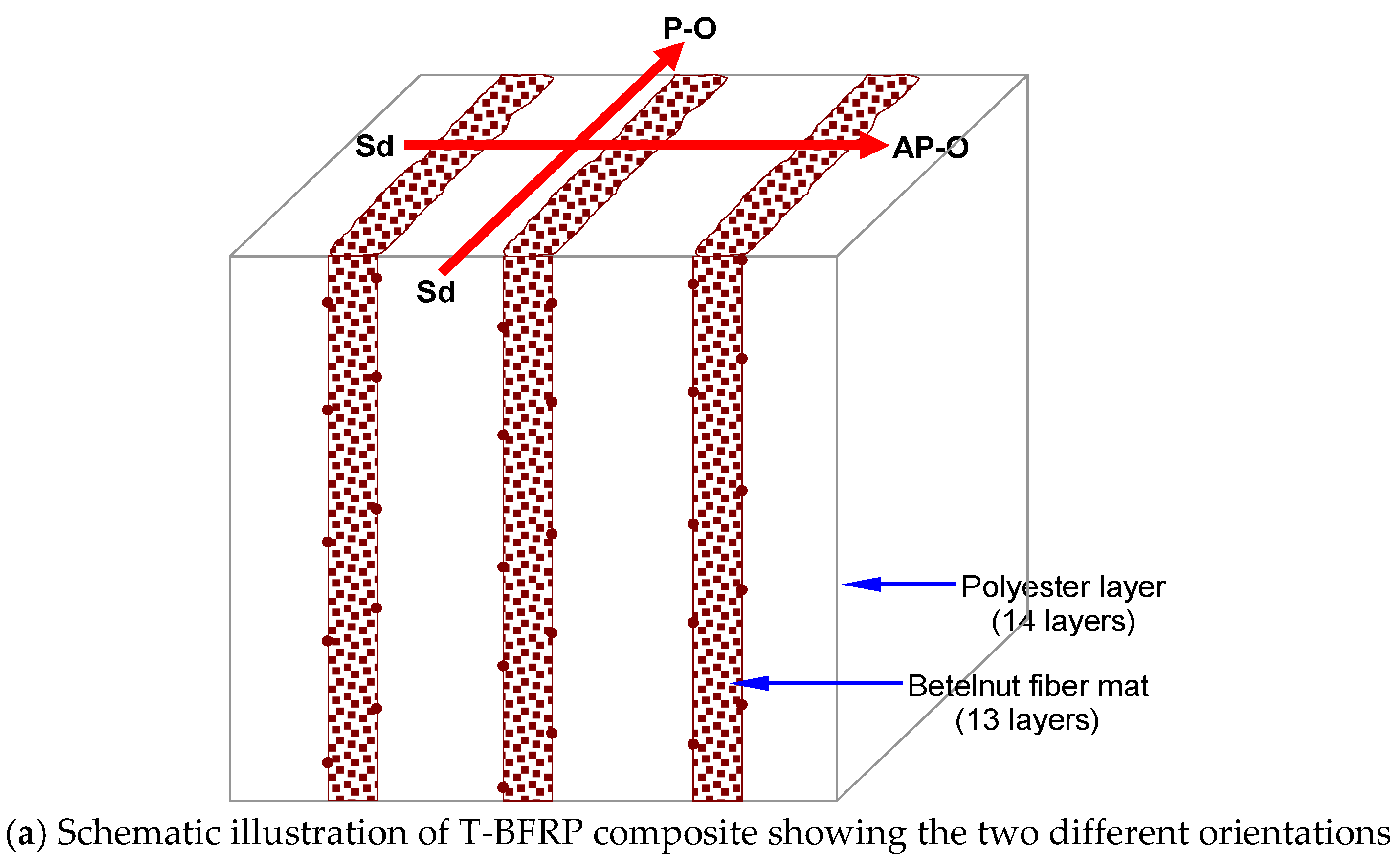
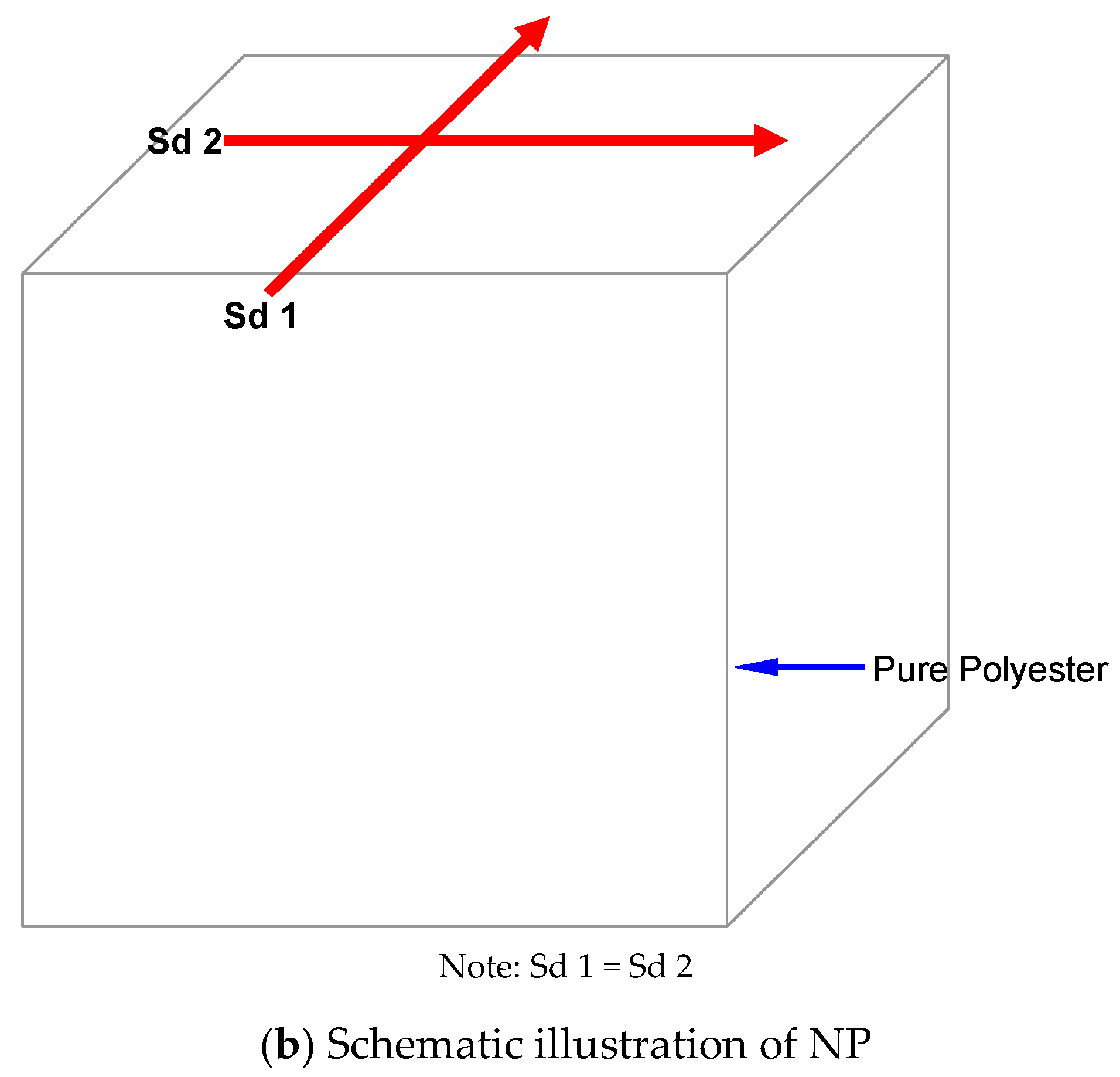
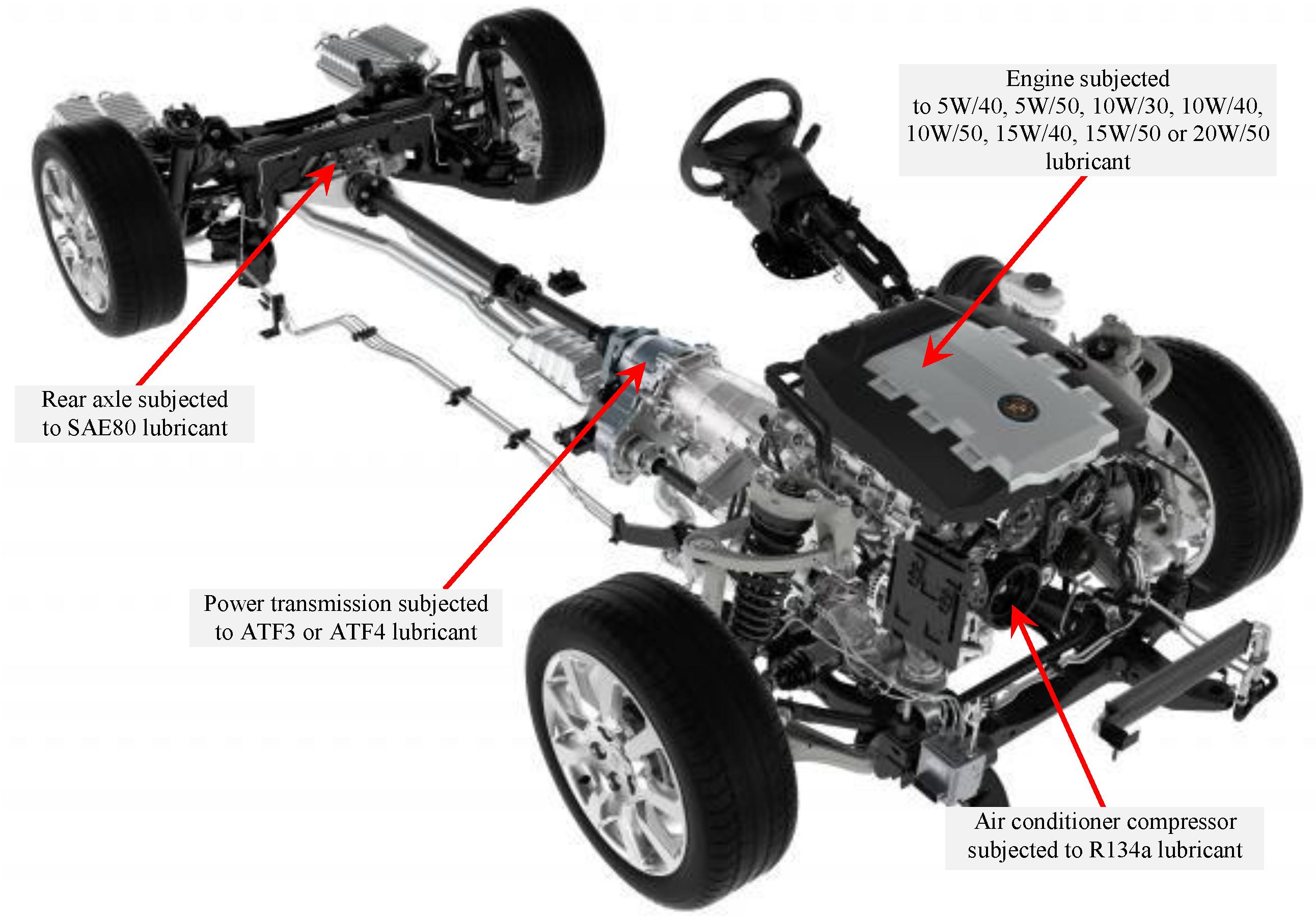
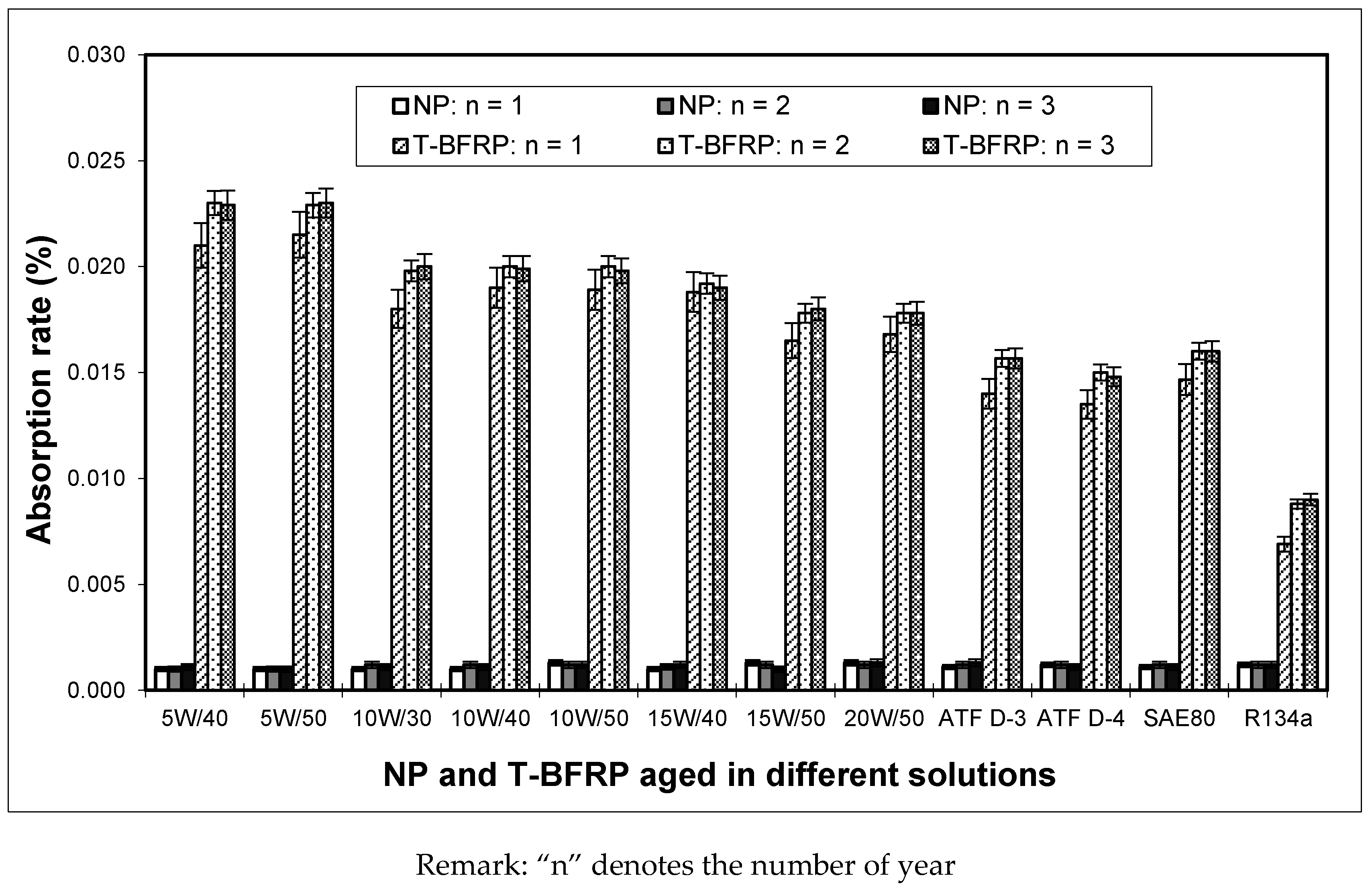
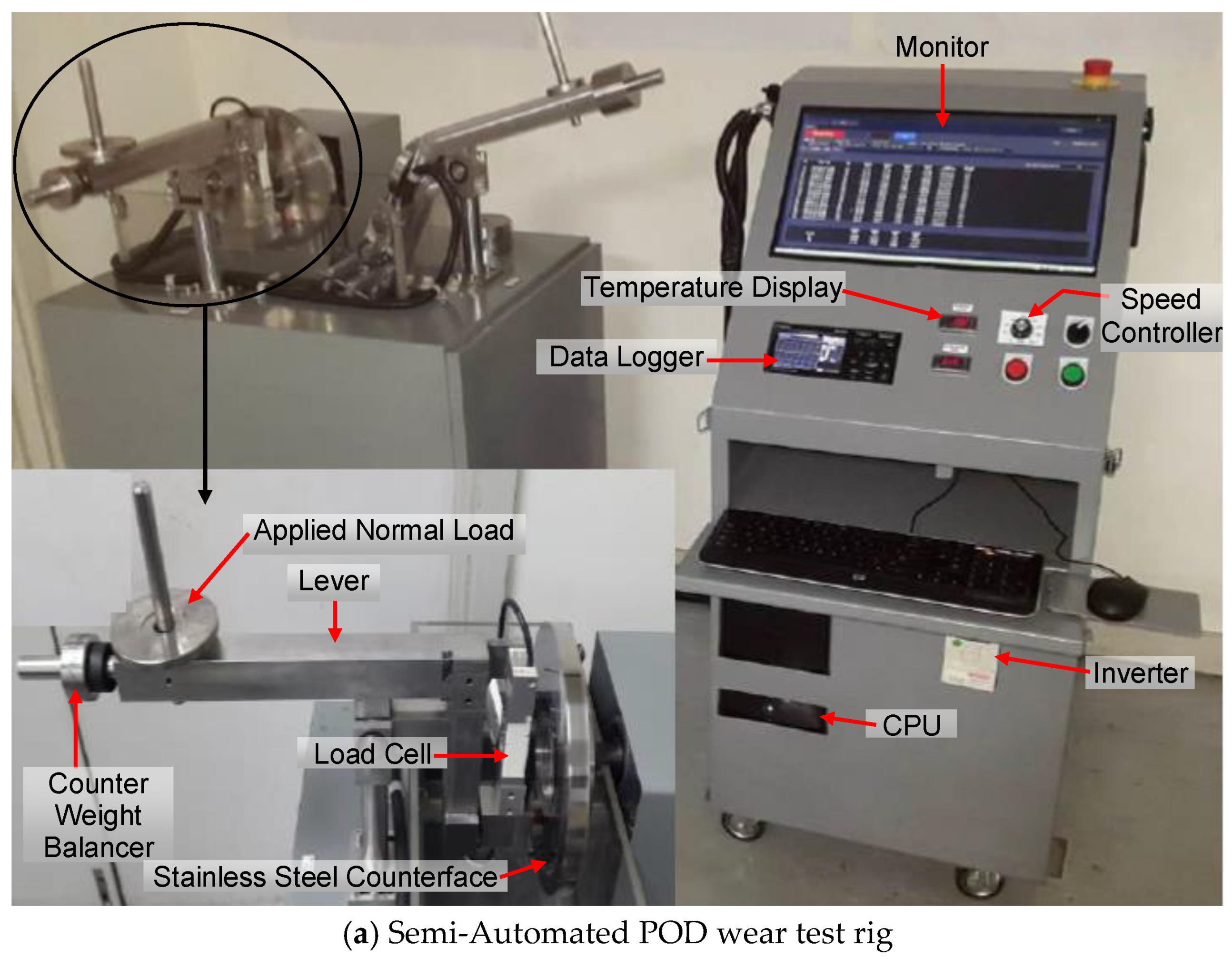
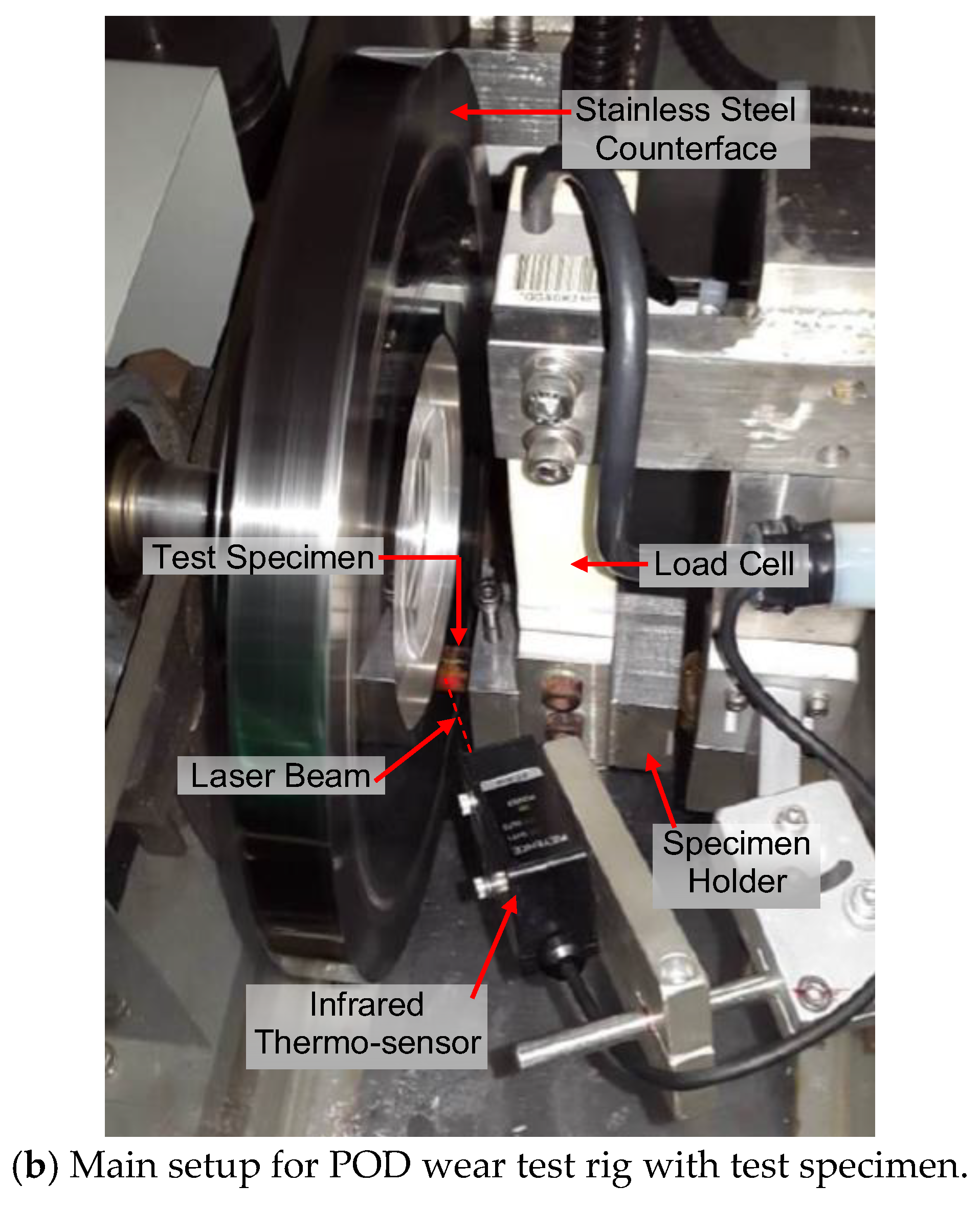

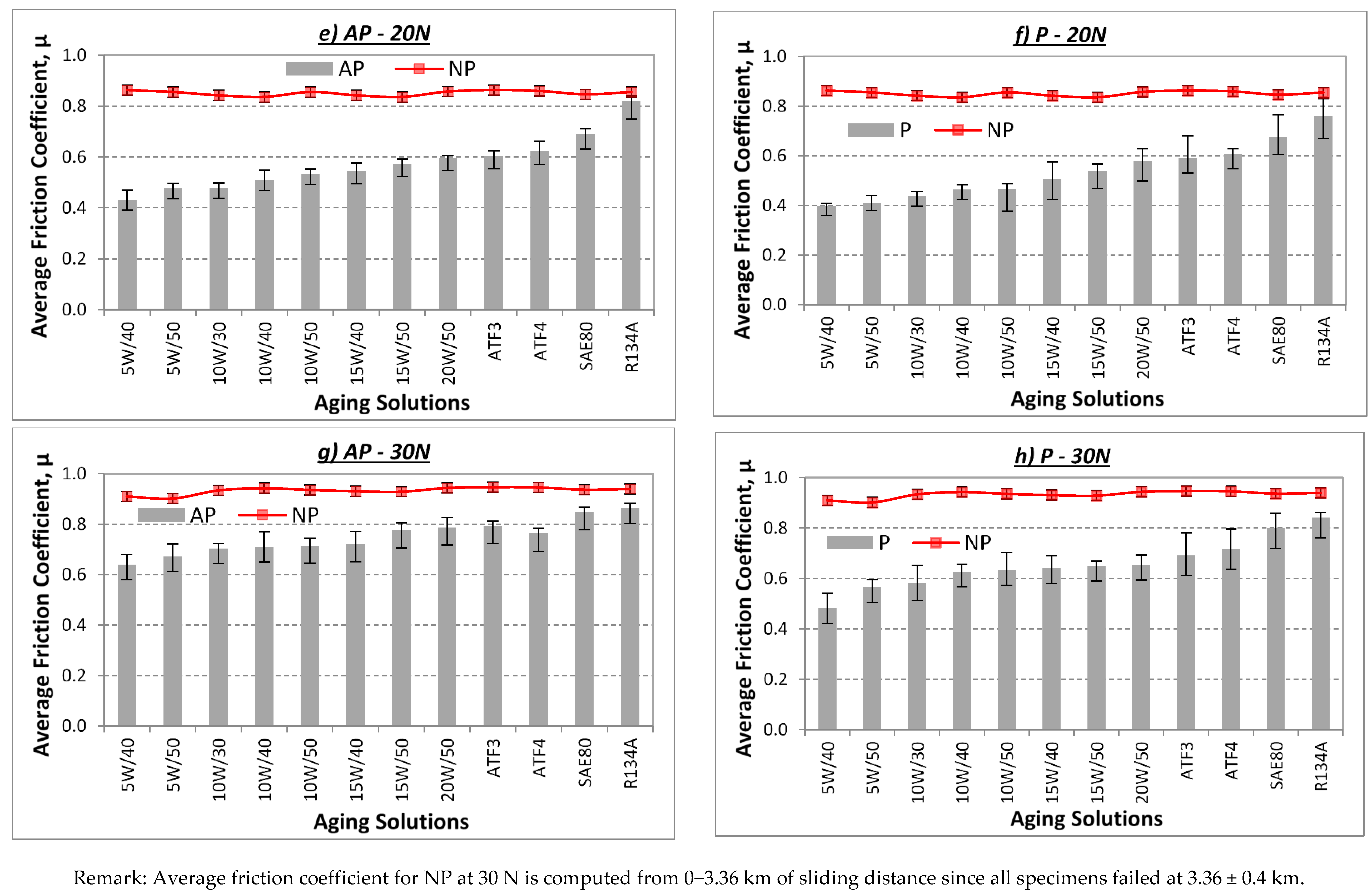


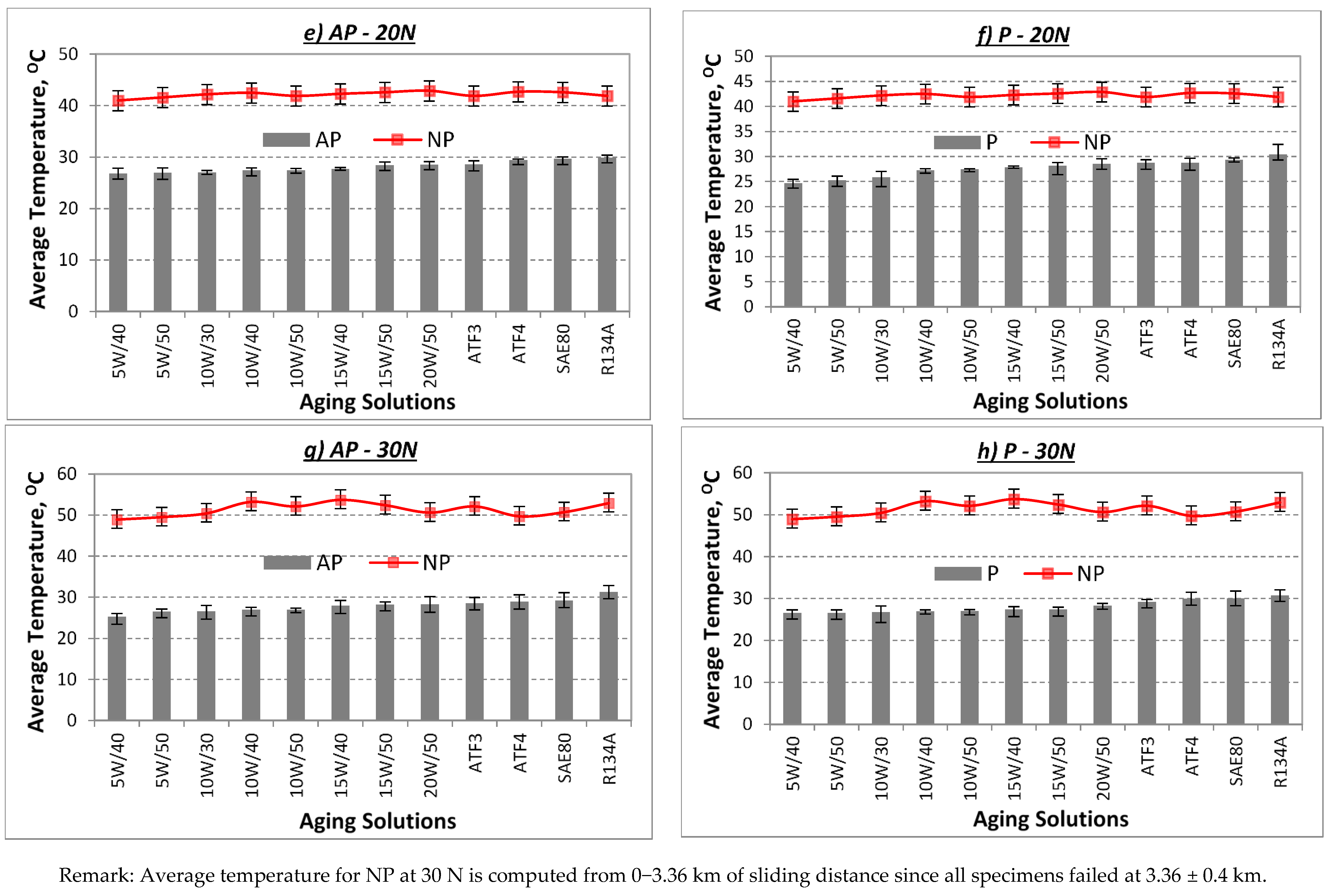
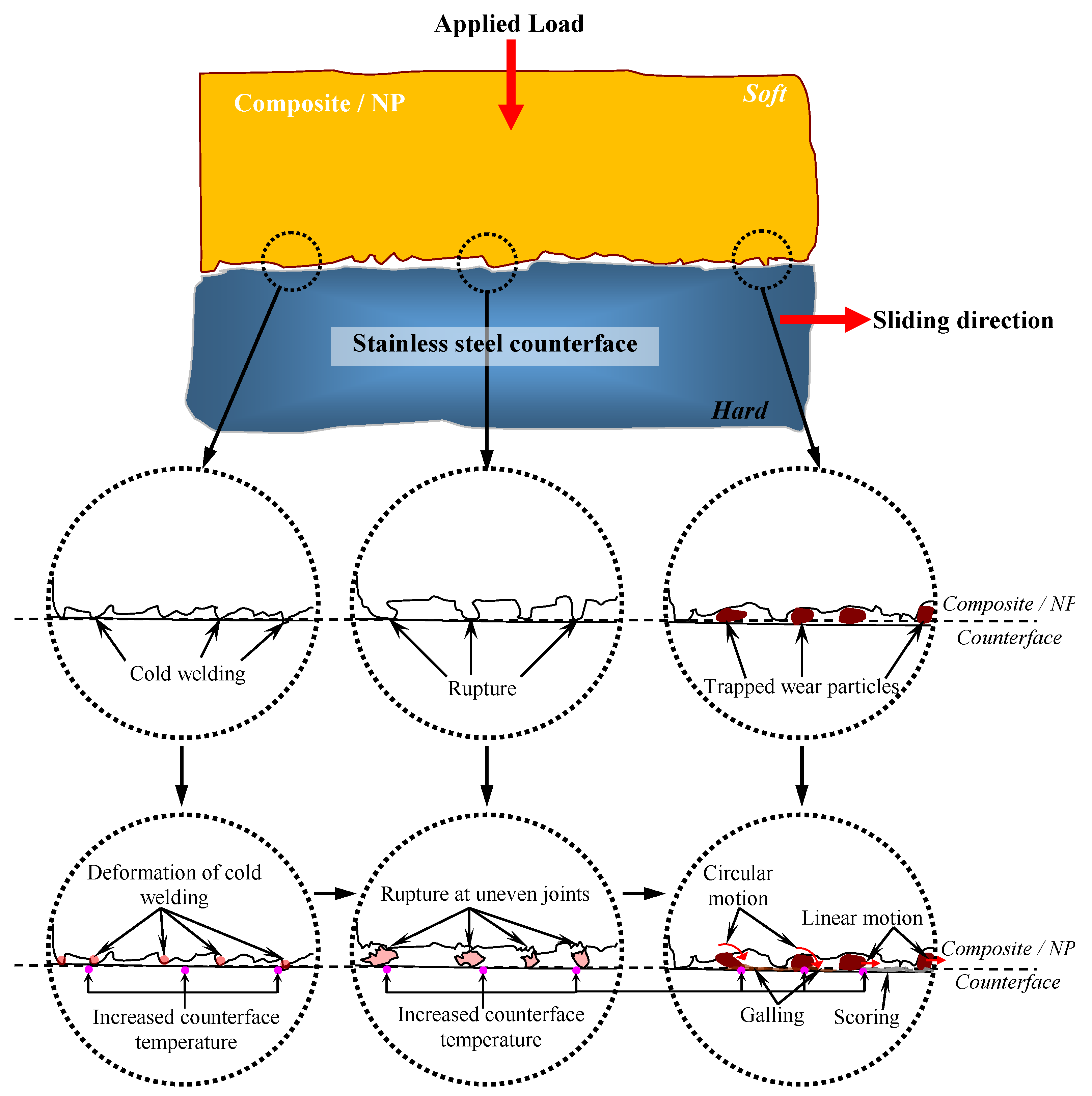
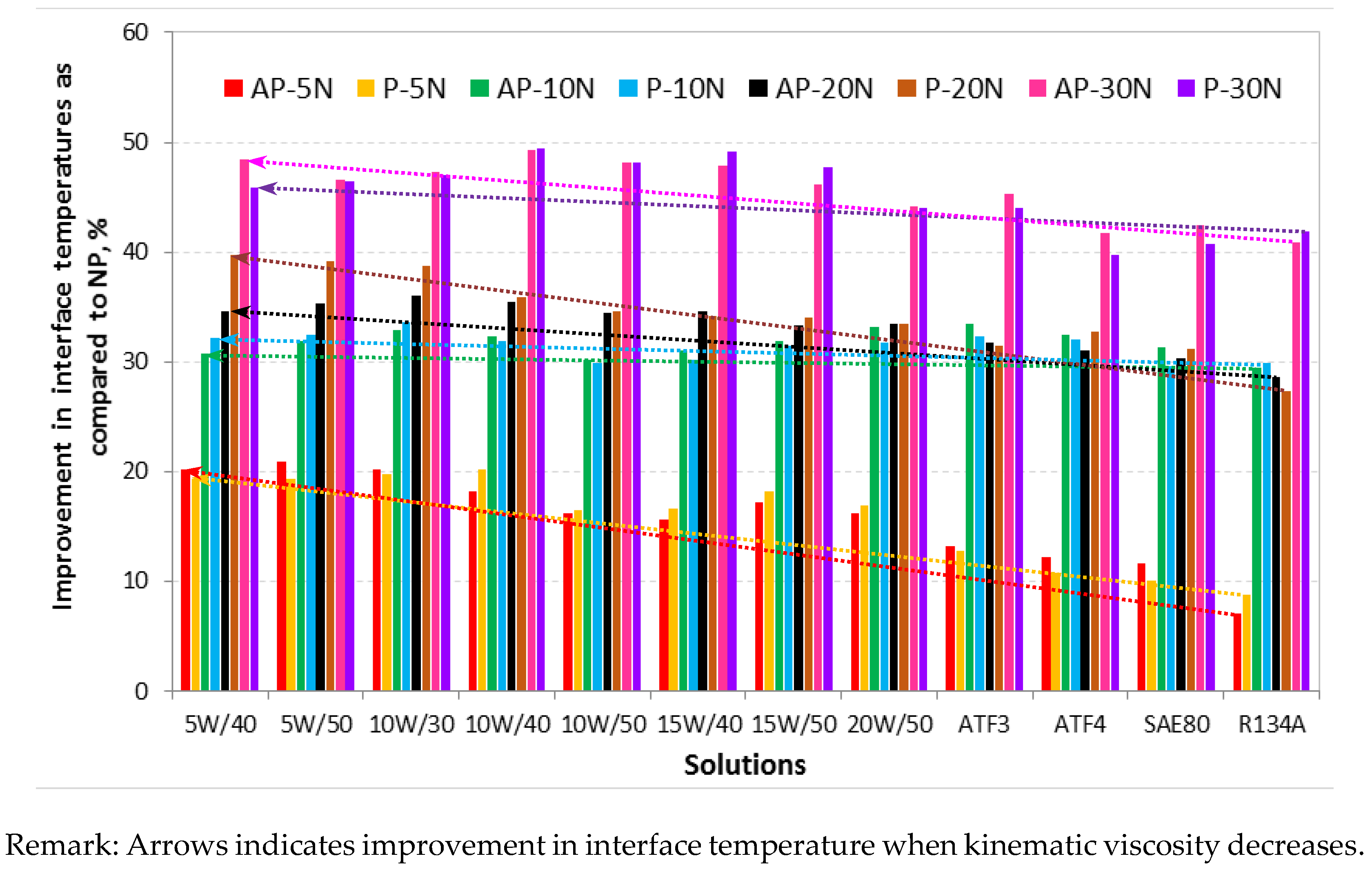
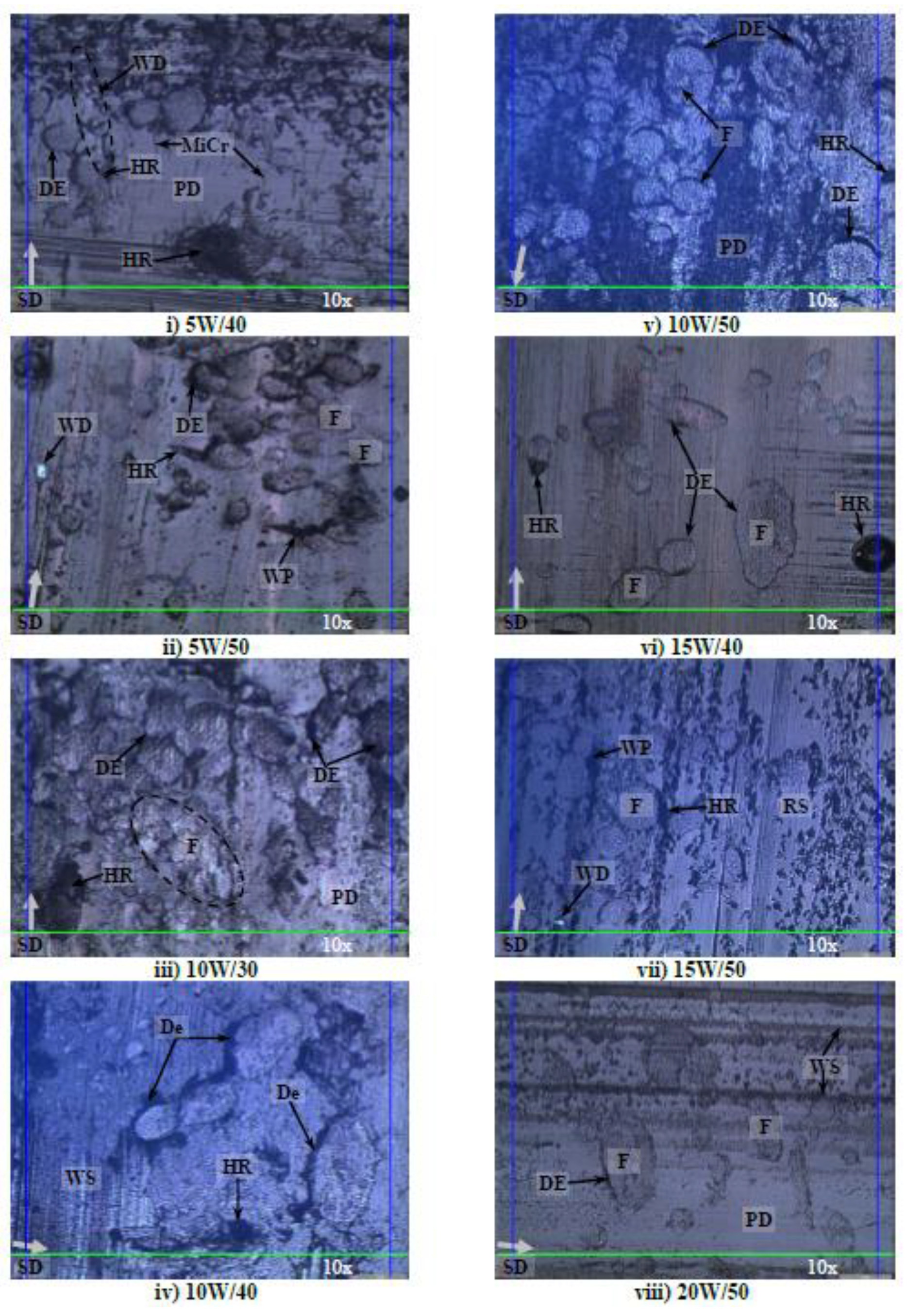

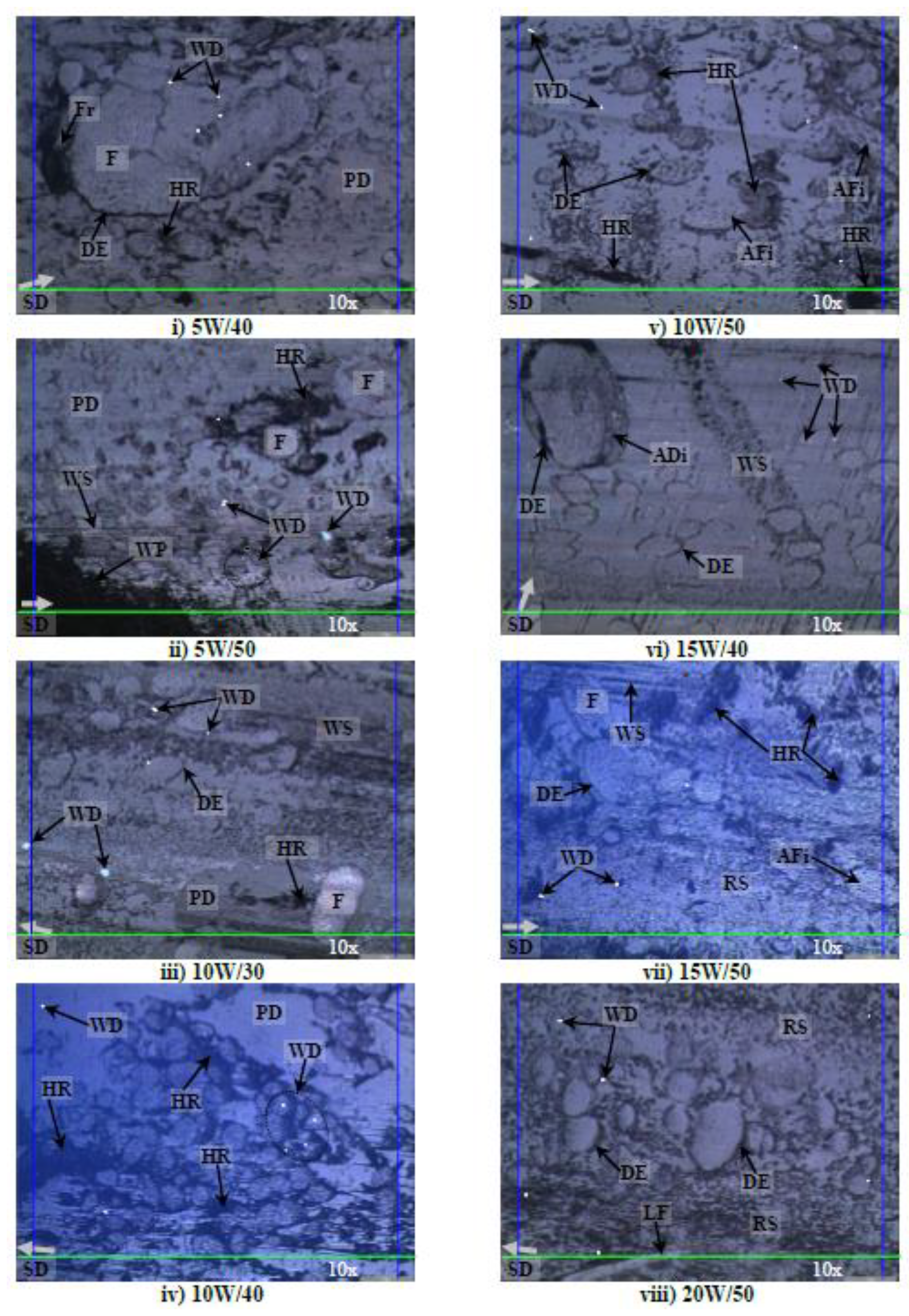
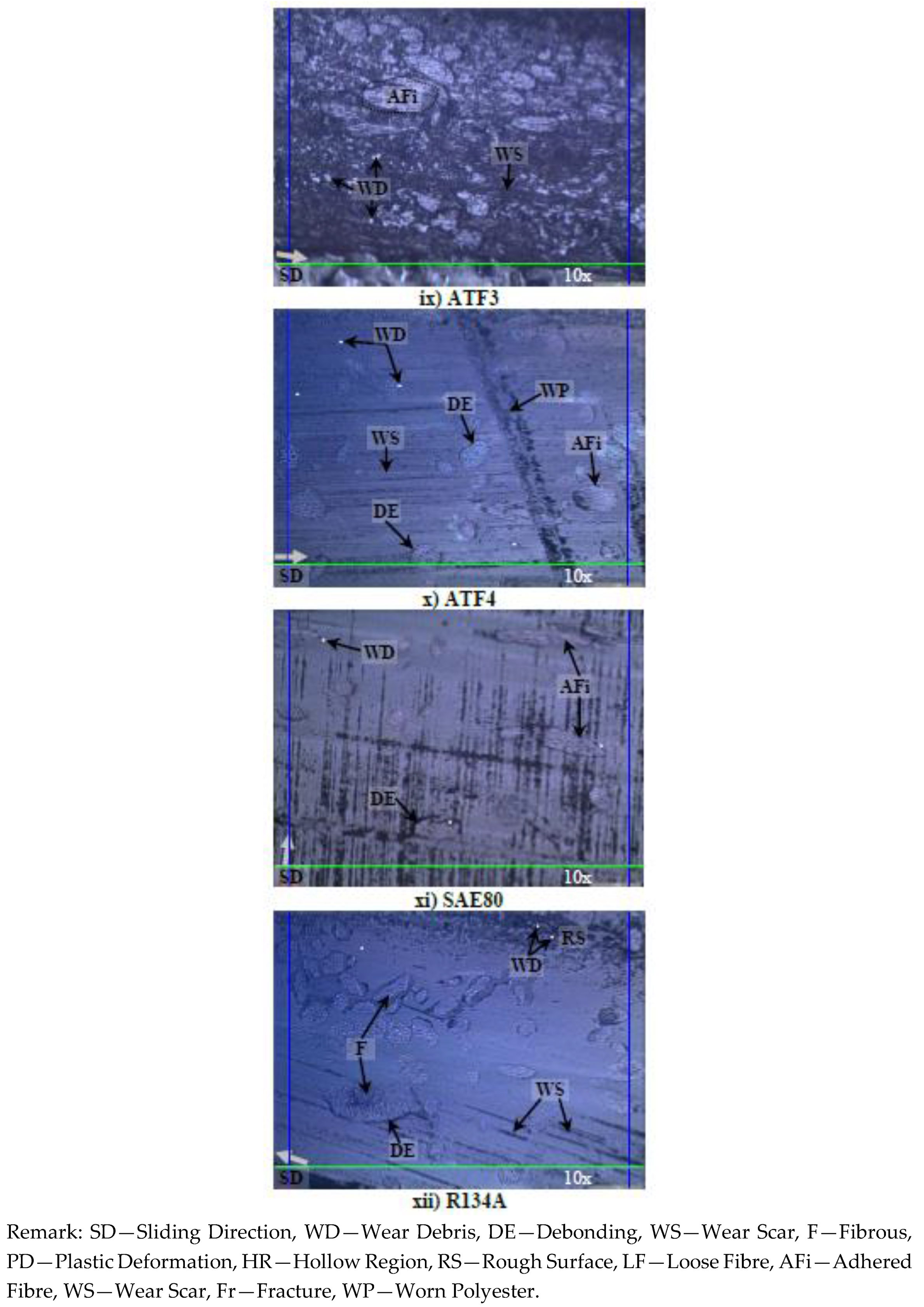
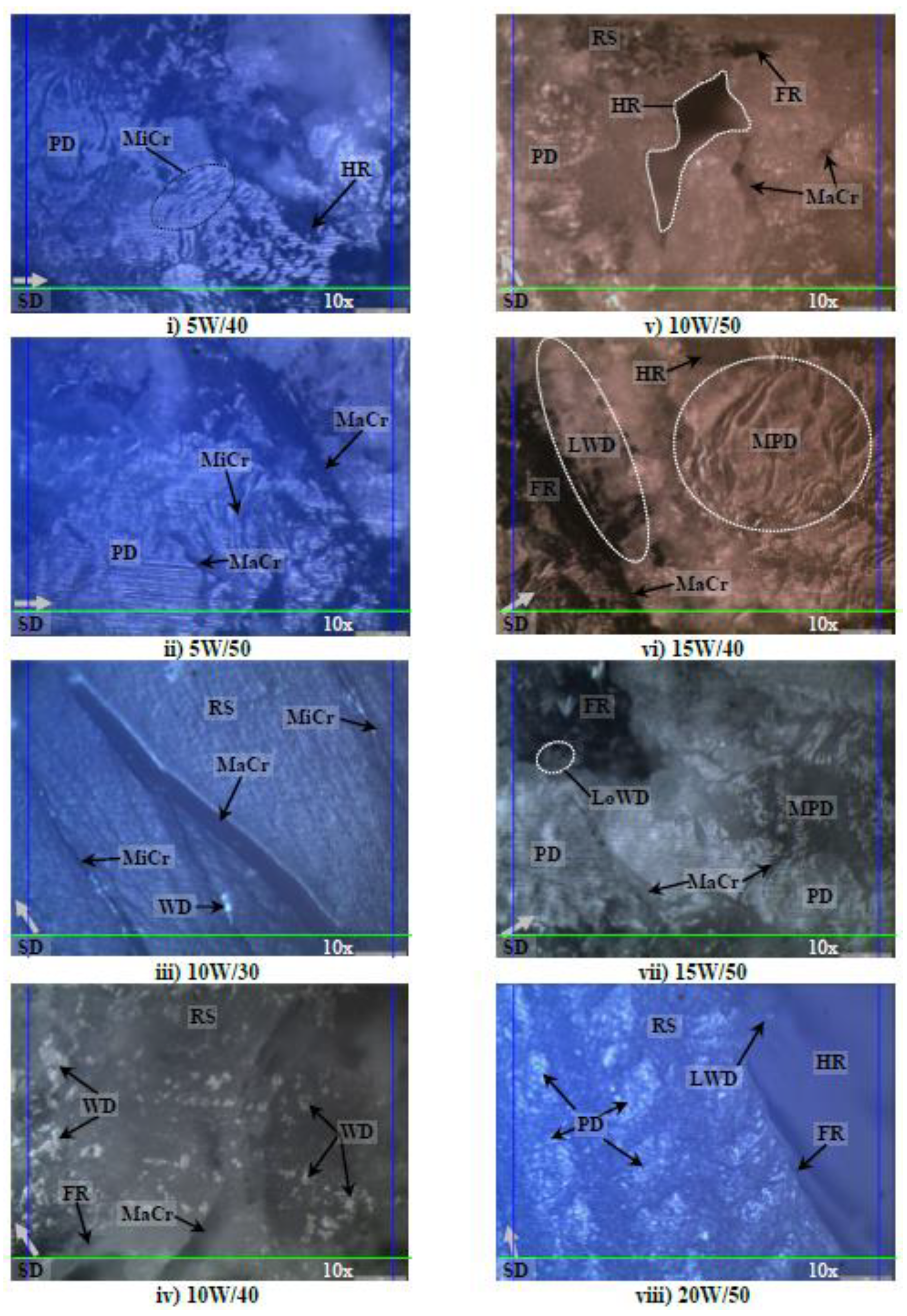
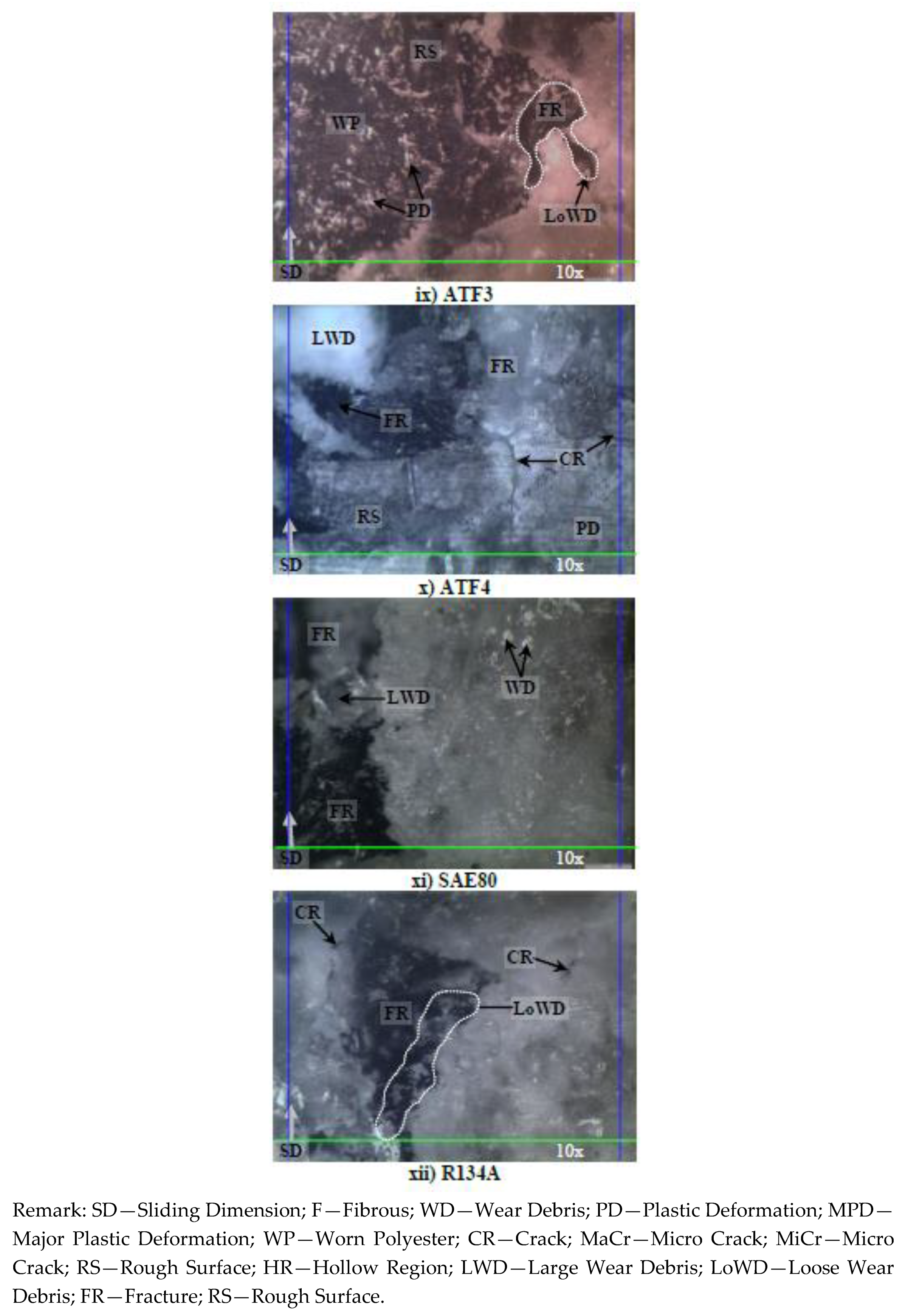
| Length of individual fibres in mat | 20–50 mm |
| Range of the fibre diameters in mat | 100–200 μm |
| Size of fibre mat | 100 × 100 mm2 |
| Density of fibre mat | 200 ± 10 g/m2 |
| Average distance of fibres in the mat | 83 ± 5 μm |
| Orientations of fibres in mat | Randomly distributed |
| Fibre to resin ratio | 48 Vol. % |
| Solutions | Kinematic Viscosity (cSt) at 100 °C | Ref. | |
|---|---|---|---|
| Minimum | Maximum | ||
| 5W/40 | 3.8/12.5 | <16.3 | [10] |
| 5W/50 | 3.8/16.3 | <21.9 | |
| 10W/30 | 4.1/9.3 | <12.5 | |
| 10W/40 | 4.1//12.5 | <16.3 | |
| 10W/50 | 4.1/16.3 | <21.9 | |
| 15W/40 | 5.6/12.5 | <16.3 | |
| 15W/50 | 5.6/16.3 | <21.9 | |
| 20W/50 | 5.6/16.3 | <21.9 | |
| SAE80 | 7.0 | <11.0 | |
| ATF D-3 | 7.2 | [11] | |
| ATF D-4 | 7.5 | [12] | |
| R134a | 20 | [13] | |
| Composite Type | Testing Conditions | Average Friction Coefficient; µ | Average Temperature; °C | Ref. |
|---|---|---|---|---|
| Aged T-BFRP | AL: 30 N SV: 2.8 m/s SD: 6.72 km | AP5W/40: 0.6402 ± 0.05 P5W/40: 0.4820 ± 0.05 | AP5W/40: 26 ± 0.3 P5W/40: 27 ± 0.3 | - |
| APR134a: 0.8634 ± 0.03 PR134a: 0.8410 ± 0.03 | APR134a: 31 ± 0.3 PR134a: 30 ± 0.3 | |||
| T-BFRP | AP: 0.8214 ± 0.05 P: 0.7431 ± 0.05 | AP: 78 ± 0.5 P: 72 ± 0.5 | [4,8,16,27,28] | |
| Ut-BFRP | AP: 0.8841 ± 0.05 P: 0.8094 ± 0.05 | AP: 50 ± 0.3 P: 53 ± 0.3 | [29] | |
| NP | AL: 30 N SV: 2.8 m/s SD: 3.36 km | 0.9400 ± 0.05 | 48–53 ± 0.5 | - |
| CSM-GFRP | AL: 50 N SV: 3.9 m/s SD: 6.72 km | AP: 0.8988 ± 0.05 P: 0.8743 ± 0.05 | AP: 85 ± 0.5 P: 82 ± 0.5 | [3,30] |
© 2018 by the author. Licensee MDPI, Basel, Switzerland. This article is an open access article distributed under the terms and conditions of the Creative Commons Attribution (CC BY) license (http://creativecommons.org/licenses/by/4.0/).
Share and Cite
Nirmal, U. Friction Performance of Aged T-BFRP Composite for Bearing Applications. Polymers 2018, 10, 1066. https://doi.org/10.3390/polym10101066
Nirmal U. Friction Performance of Aged T-BFRP Composite for Bearing Applications. Polymers. 2018; 10(10):1066. https://doi.org/10.3390/polym10101066
Chicago/Turabian StyleNirmal, Umar. 2018. "Friction Performance of Aged T-BFRP Composite for Bearing Applications" Polymers 10, no. 10: 1066. https://doi.org/10.3390/polym10101066




